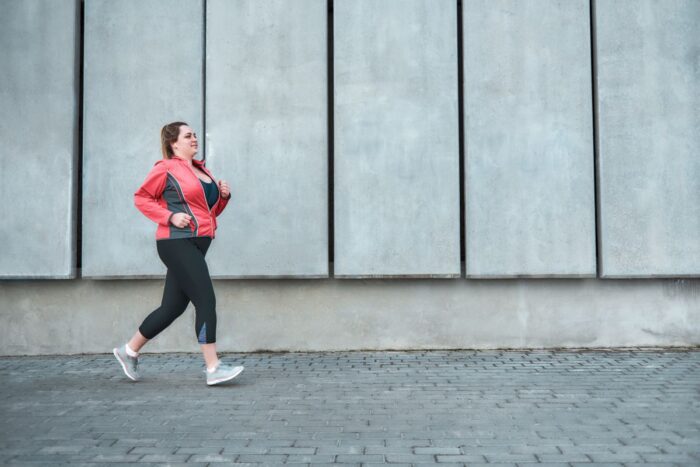Being diagnosed with fatty liver was a real wake-up call for me: it was shocking and scary and it made me cry. But after the initial shock, I decided that it’s time to do something about it, so I did.
I started learning about fatty liver, I changed the way I eat and live (and it wasn’t easy!), but I did it – I managed to reverse my fatty liver in at most 18 months after being diagnosed.
This is what you can do to – and this is what I’m going to tell you in today’s article: what to do after being diagnosed with a fatty liver disease / NAFLD. After the initial shock is gone.
1. Educate yourself about fatty liver

Being diagnosed with NAFLD forced me to confront the unhealthy lifestyle choices I was making – bad eating habits, no exercise, lack of sleep & plenty of stress – to regain my health.
But I knew nothing about fatty liver. Unfortunately, the first doctor I visited told me that it’s a condition that can’t be reversed and that the best hope I can have is for it not to evolve into something worse.
I was 30 at that time, with a newborn by my side. It was a horrific experience.
Fortunately, I decided to do my own research – and now I am happy that I did. And you will be happy too, I guarantee it!
I wanted to know what caused it and what I could do to reverse it. I learned that fatty liver disease is caused by an excessive buildup of fat in the liver, often due to poor diet and lifestyle choices.
It can be overwhelming to figure out what steps to take next, but you’re already on the right track, learning about fatty liver and how to reverse it. This is the first step, and an important one to take.
You have plenty of free and not free resources to tackle this. I am linking to a few important ones on this blog, as well as a book that will help you reverse your fatty liver and cover everything you need to know about this disease:
- Reverse your Fatty Liver by Jonathan Mizel & Susan Peters
- Learn about the stages of a fatty liver
- Is fatty liver life threatening?
- Best vitamin supplements for reversing fatty liver
- How long does it take to reverse fatty liver?
Don’t try to read all these (and the many articles and resources I’ll be linking to in today’s article) all at once.
But do come back to this epic article, which will cover the most important things you should know and do about reversing your fatty liver.
PS: Please share this with friends and family – it helps me tremendously and I know, therefore, that all the hard work that I put behind this project doesn’t go unnoticed.
2. Change your diet

Now that you know the basics, you have to change your diet. There’s really no other way around it.
I personally cut out all processed and junk foods (including candy), stopped drinking alcohol and stopped eating sugar.
Instead, I focused on eating whole, nutritious foods. I started eating more fruits, vegetables, lean protein, and healthy fats like avocado and nuts. Smaller portions too.
I also made sure to drink plenty of water throughout the day to stay hydrated and help my body flush out toxins. This alone helped me lose plenty of weight and I am sure it was the most important step I took in reversing my fatty liver.
With these in mind, you should go more in depth with these article regarding dieting and fatty liver (although there are heaps more on this blog):
- The fatty liver diet that I followed and recommend
- Foods to avoid or stop eating
- Stop drinking alcohol if you have a fatty liver
- What fruits to eat with a fatty liver
- Best bread for fatty liver
- Fatty liver-friendly recipe ideas
I repeat: the changes that you make to your diet are probably the most important step you can take in reversing fatty liver disease.
Fortunately, there are multiple approaches that work, and you will see that the diet itself is not too restrictive. You will slowly, but surely get to love it!
3. Start exercising!

Exercise was another important part of my plan to reverse fatty liver disease. However, I only started to exercise some 6 months after being diagnosed, as I was losing a lot of weight anyway and my health was improving.
But when the weight loss plateau happened (and it will happen), I started exercising to get in shape and also to help me lose the final set of pounds that had to be lost.
I started by incorporating light exercise like walking, slow running and gradually increased the intensity over time. Here are my recommended reads on this matter:
- Lifestyle changes to make for reversing fatty liver disease
- Is running/jogging good for fatty liver?
Regular exercise not only helps burn excess fat but also improves insulin sensitivity, which can help reduce inflammation in the liver.
And you will feel more energetic overall. I still exercise (usually jogging) today, so many years after reversing my fatty liver – I naturally turned from a couch potato into a person that loves to exercise.
4. Work on managing stress to reverse your fatty liver

I’m not the only one who believes that stress is a major problem for us all and that the bad stress can have a negative effect on our health, including an influence over developing a fatty liver and reversing it.
I am sure that my work on reducing stress was key in my journey to get healthy again. I made sure to learn how to meditate, prioritize relaxation and good sleep, as well as self-care.
Stay close to your loved ones, go outside and enjoy nature, do things that you enjoy doing (as long as they promote healthy habits…) there are plenty of ways to manage stress – but just do it.
You can read more about fatty liver and stress here.
I personally listened to many of the Huberman Lab podcast episodes and it has helped me tremendously to learn how to manage stress, rest well and regain my health, so I highly recommend it.
5. Monitor your progress

Regular checkups with your healthcare provider are essential for monitoring your progress. I personally visited my hepatologist every 6 months after being diagnosed, then switched to yearly visits after reversing it.
Make sure to discuss this with your doctor and go for the regular checkups as often as they recommend you to.
They may also recommend additional blood tests, imaging tests, or other diagnostic tests to monitor your fatty liver disease.
This is a great motivator to keep you on track: seeing that all the trouble you’re going through actually has an effect over your health and it works, improving your condition, will give you the power you need to keep doing it.
Yes, it will be difficult at times, but the hardest part is the first couple of weeks to a month, in my opinion.
Afterwards, it just becomes you loving your new way of eating and living and appreciating the extra energy and generally feeling better and better each day.
Conclusion
If you’ve been diagnosed with fatty liver disease, I encourage you to take action and make the necessary changes to improve your health, from educating yourself to actually taking the required steps to reverse this condition.
By eating a healthy diet, maintaining a healthy weight, exercising regularly, avoiding alcohol, and getting regular checkups, you can improve your liver health and reverse fatty liver. I did it and many other people I know have done it as well.
Just stick to your plan and do it!

I was diagnosed with a fatty liver back in 2014 and managed to reverse it by mid-2015. Since then, I’ve been studying it, continuously updating my knowledge with the latest scientific findings and practical approaches to give others the help they need to reverse their condition.
My approach to managing fatty liver is holistic, balancing scientifically-backed information with real-life, practical advice based on personal, direct experience.
I am also the admin of the Fatty Liver Support Group on Facebook and the Fatty Liver Subreddit.

